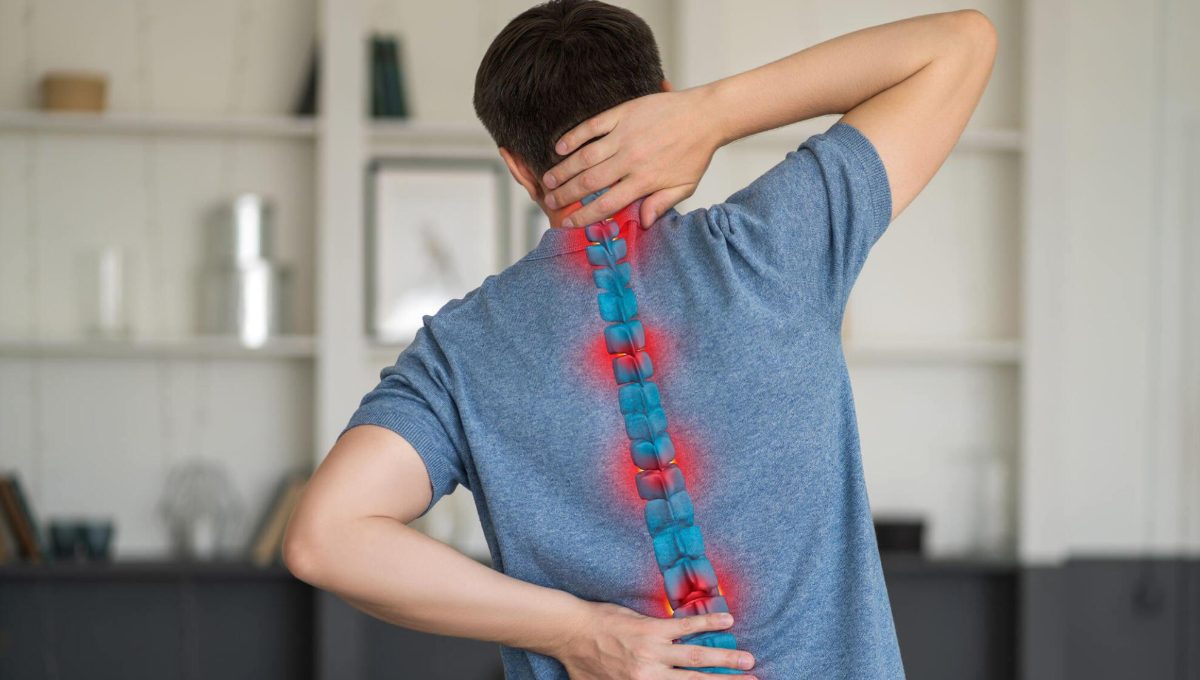Does Stem Cell Therapy Help In Treating Herniated Disc?
Back pain is a common condition that many individuals experience at some point in their lives. Intense and unbearable back pain can occur due to various reasons such as injuries, strains, sprains, osteoporosis, posture-related disc degeneration, herniated discs, etc. Disc issues are prevalent these days, but there is nothing to worry about. With the proper treatment approach and care, one can easily beat this orthopedic condition and get rid of excruciating pain.
This article will explain herniated disc degeneration, its associated symptoms, and how stem cell therapy can help you heal from this condition. Let’s get started!
Table Of Contents
- Anatomy of a Spinal Disc
- What is a herniated disc?
- How Does Stem Cell Treatment Work For Herniated Discs?
- What Types of Stem Cells Are Used For Herniated Disc Treatment?
- Advantages of Using Umbilical Cord-Tissue Derived Mesenchymal Stem Cells
- Is Stem Cell Therapy The Right Treatment Option For You?
- Herniated Disc Post-treatment Care and Follow-Up
Anatomy of a Spinal Disc
The spinal cord comprises 24 individual bones called vertebrae; in between these bones are intervertebral discs or spinal discs. These discs are soft cushion-like structures between the vertebrae bones essential for the spine’s normal functioning. These spongy and rubbery cushions provide a range of motion and flexibility to the spine and are also shock absorbers.
The intervertebral discs, which respond to the body’s motion, contain a gel-like substance called nucleus pulposus. This substance is encased in a more rigid and firmer exterior of fibrous cartilage called annulus fibrosus. In healthy spines, the gelatinous fluid, called the nucleus pulposus, settles back to its proper position within the disc after the body returns to its stable stance after responding to motions.
What is a Herniated Disc?
In herniated discs, the nucleus pulposus cannot sit back to its original position in the middle of the disc. This condition occurs due to deformed or displaced spinal discs pushing the gel-like fluid against the annulus wall. A herniated disc, bulging disc, or ruptured disc can occur anywhere along the spine, and its location defines the symptoms’ severity.
When the nearby spinal nerves cannot pass through the spinal canal due to a bulged disc, it pushes the disc fragment outside, causing severe pain and wear and tear of the spinal tissues. Age-related issues and spinal injuries are common causes of a herniated disc or disc degeneration. If left untreated, the disc ruptures or tears can cause chronic back pain, affecting quality of life and mobility.
How Does Stem Cell Treatment Work For Herniated Discs?
Back pain is a common complaint that millions of individuals experience at some point throughout their entire lifetime. Especially older people, overweight individuals, and those with a sedentary lifestyle are more prone to the risks of disc degeneration.
Typical conservative treatment solutions include pain medications, anti-inflammatory drugs, or steroid injections. However, they only offer temporary relief from pain and fail to address the underlying cause of the condition. Surgery is also recommended in cases of severe and intolerable pain, but it has many drawbacks, including prolonged rehabilitation and extended recovery time.
Stem cell therapy for back pain is a modern-age innovative treatment that addresses the pain by regenerating healthy tissue and rebuilding the disc material. Unlike traditional methods, it reduces the symptoms, alleviates pain, and helps the body use its healing mechanism, leading to the growth of healthy tissues in the herniated disc. Stem cell intervention is a revolutionary treatment that has taken the world by storm with its remarkable regenerative power and therapeutic potential.
Read Also: Can Stem Cell Therapy Provide Relief From Chronic Knee Pain?
What Types of Stem Cells Are Used For Herniated Disc Treatment?
Stem cells are undifferentiated cells extracted from the adult human body or umbilical cord tissue to produce more stem cells. A growing body of evidence in several clinical studies and research indicates that mesenchymal stem cells (MSCs) are the most potent cells. They offer promising results in treating various medical conditions, including herniated discs or disc degenerative disease.
Mesenchymal stem cells found in multiple human body tissues such as bone marrow, fat or adipose tissue, and umbilical cord are multipotent cells capable of differentiating and multiplying into cell types like bone, muscle, cartilage, blood, or nerve cells. Their unique cell differentiation capability, rich anti-antiinflammatory effects, and high immunomodulatory properties make them ideal for regenerative therapies.
Wear and tear or rupture of the intervertebral discs over time is the common cause of back pain and discomfort. When injected into the affected areas, stem cells promote regeneration of the discs’ tissues and provide lasting relief from pain. Stem cells can also be administered through intravenous infusions. MSCs are introduced into the bloodstream, traveling throughout the body to reach the injured or inflamed areas. Intravenous delivery of stem cells promotes systemic and widespread distribution of new and healthy cells and provides patients with comprehensive therapeutic benefits.
Advantages of Using Umbilical Cord-Tissue Derived Mesenchymal Stem Cells
Human umbilical cord-tissue-derived mesenchymal stem cells (HUCT-MSCs) are considered a promising source of regenerative medicine treatment due to their supremacy over other types of stem cells in terms of proliferation capacity, differentiation capabilities, tissue repair, and regenerative properties.
- High proliferation rate – HUCT-MSCs show faster expansion and proliferation rates than bone marrow or adipose tissue-derived stem cells.
- More considerable differentiation potential – Studies reveal that stem cells isolated from cord tissues possess an extensive and broader differentiation capacity, enabling them to produce any cell type and regenerate a comprehensive range of cells, tissues, or organs.
- Immunomodulatory properties – HUCT-MSCs aid in regulating the immune system response, which promotes a favorable environment for tissue repair and regeneration.
- Angiogenic potential – Umbilical cord tissue cells produce proangiogenic factors that support the growth of new blood vessels, facilitating tissue repair and healing.
- Anti-inflammatory effects – Inflammation caused by herniated discs significantly contributes to back pain, and cord tissue-derived stem cells play a vital role in reducing pain by suppressing inflammation with their potent anti-inflammatory properties.
- Growth Factors – HUCT-MSCs release various growth factors and paracrine or cytokines that act on surrounding cells, attracting them to the injury site and promoting tissue regeneration.
Read Also: Healing Power Of Stem Cell Therapy: A Comprehensive Guide
Is Stem Cell Therapy The Right Treatment Option For You?
There is no “one-size-fits-all” treatment using stem cells. Your treatment plan for herniated discs will be unique to you, curated carefully by your healthcare providers based on your body’s needs and condition. When you approach a renowned and trusted stem cell therapy institute, they will first determine your eligibility for the treatment. Several factors influence their decision to qualify you as a stem cell candidate, such as age, severity of the condition, current symptoms, medical history, past surgeries, etc.
You can connect with a premier institute for stem cell therapy in Mexico, Life Altering Stem Cell Therapy Institute, to know whether your body can receive stem cells. Fill up a patient application form or speak to a health advocate to learn more about stem cell treatment and whether it is the right option for you.
Herniated Disc Post-treatment Care and Follow-Up
Aftercare or post-management care for stem cell therapy for herniated discs is very simple and medication-free. Unlike invasive surgery, recovery time is also minimal, and patients can return to their routine within a week of treatment. However, they should be extra careful with their postures, movements, and physical activities. Sudden movements or jerks can impact the treated disc and reduce the effectiveness of the therapy.
Patients are expected to gradually regain strength and balance in the spinal cord and muscles and might need support in the first one or two days after receiving stem cell injections. Your healthcare provider will also follow up with you regularly, at least for six months after treatment, to track your health progress and monitor improvements.
Final Thoughts
In conclusion, stem cell therapy for back pain or herniated discs represents a breakthrough approach to regenerative medicine. Although research to explore the full potential of stem cells in treating herniated or bulging discs is still ongoing, initial results are promising. The therapeutic effects of mesenchymal stem cells, especially umbilical cord tissue-derived stem cells, hold significant potential in revolutionizing chronic pain management caused by herniated discs and enhancing patients’ overall quality of life.
Do you want to get rid of back pain? Our highly qualified medical professionals can help! Life Altering Stem Cell Therapy Institute is a leading stem cell center in Mexico, a frontrunner in delivering cutting-edge regenerative medicine therapies to patients worldwide. At our clinic, we have witnessed life-altering healing transformations with cell-based treatment for various conditions, from autoimmune diseases to neurodegenerative disorders, heart diseases, Alzheimer’s diseases, and more. Don’t live your life in pain. Connect with our medical team today to start your journey toward healing.

